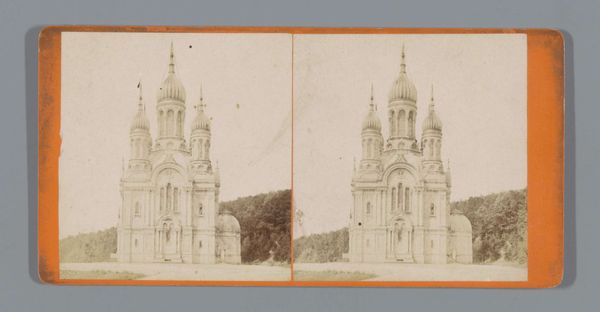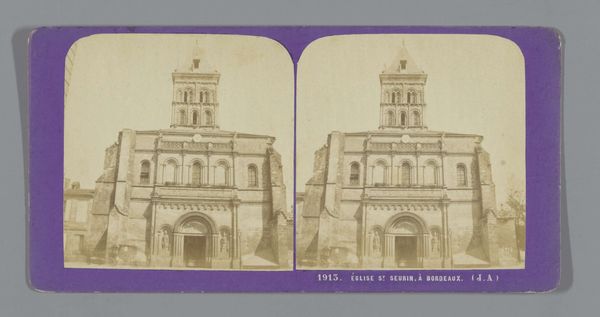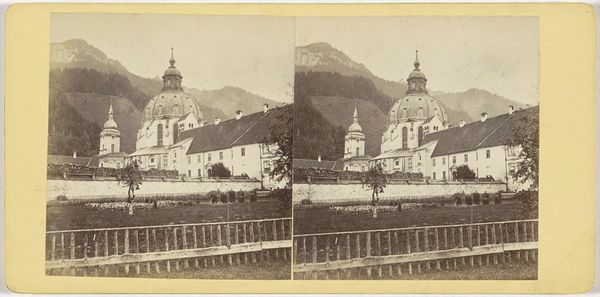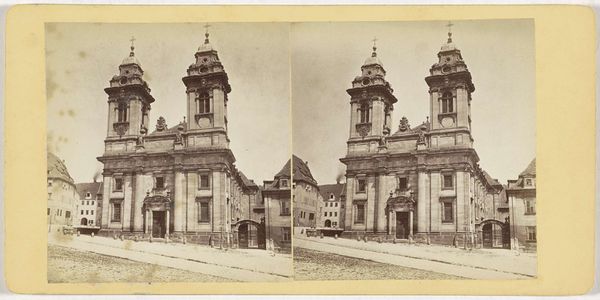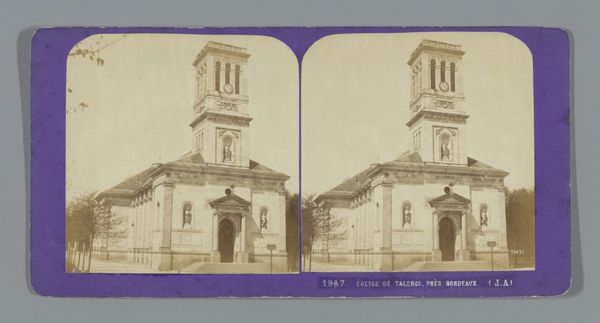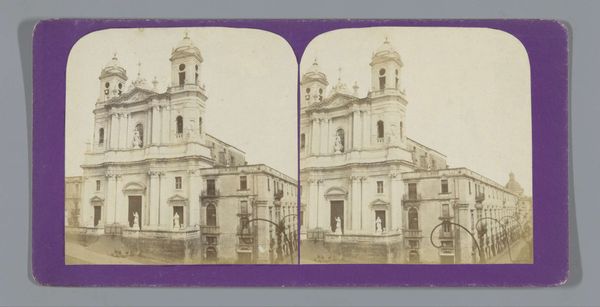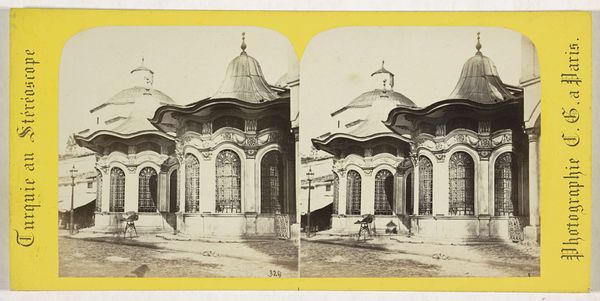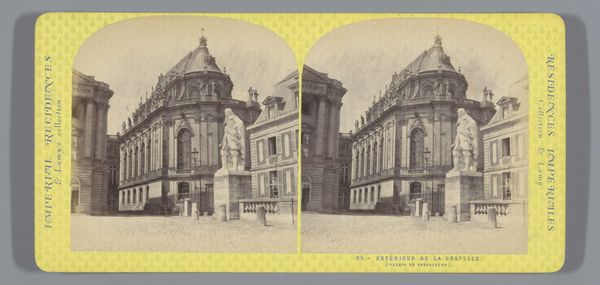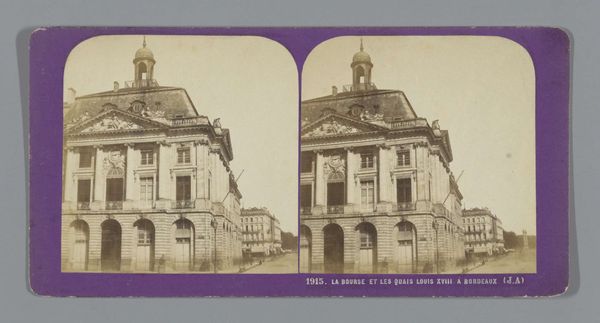
print, photography, architecture
# print
#
landscape
#
photography
#
coloured pencil
#
cityscape
#
academic-art
#
architecture
Dimensions: height 87 mm, width 174 mm
Copyright: Rijks Museum: Open Domain
Curator: So here we have Carl Friedrich Würthle's "Dom van Salzburg," a photograph taken between 1874 and 1875. Editor: My initial reaction? It's stunningly… symmetrical, almost aggressively so. The eye just wants to find some tiny imperfection, a crack in the facade, anything to break that relentless mirroring. Curator: Indeed, the perfect symmetry speaks volumes. Würthle's photograph highlights the grand scale of Salzburg Cathedral, a demonstration of ecclesiastical power solidified in stone, labor, and precise angles. The materiality here, that weightiness, really underlines the church’s temporal authority, wouldn’t you agree? Editor: Absolutely. Think about the quarrying of the stone, the transportation, the sheer human effort in constructing such a monumental space. This isn’t just about religious faith, it’s about consolidating control, and the aesthetic of this period certainly served that end, with it's academic commitment to the depiction of scale. The tones make me think it was tinted? Curator: Probably so. The sepia tones add a nostalgic patina, though. It whispers stories of old empires, of course. You see how the distant mountains in the backdrop serve as both a frame and an echo of the Cathedral's towering presence. The work explores the idea of human creation amidst natural grandeur; what effect do you think this interplay has on a viewer? Editor: Well, the photograph, despite its meticulous precision, gives the sense that the mountains have a power, and the photograph as an object is almost archaeological in its form – unearthed, and in tones that age it as artifact from its birth. This aesthetic choice reinforces the material sense that nothing – even that grand cathedral - stands the test of time. And I suppose time's the greatest leveler of social structure. Curator: Precisely, but it also speaks to an eternal, unwavering spiritual foundation, or the claim to it, at least, and maybe Würthle is, either by accident or design, setting them in a sort of dialectic. The soft focus suggests the past, memory. I think he might be using that photographic process to gently undercut those overt statements of authority with allusions to mortality and change. Editor: Perhaps he's commenting on the transient nature of earthly power, highlighting how materials endure while ideologies shift. He makes the political so very visual in its materiality, almost setting them as opposites that nonetheless define each other in space. What are your lasting thoughts on it, in the end? Curator: I think it captures a beautiful tension. It embodies the spirit of its age—a moment caught between reverence for the established order and a quiet recognition of its impermanence. What's your ultimate takeaway? Editor: The "Dom van Salzburg" functions as a reminder that even the most imposing structures are products of human hands, materials extracted and assembled—and, like all material things, subject to time and the forces of change.
Comments
No comments
Be the first to comment and join the conversation on the ultimate creative platform.
